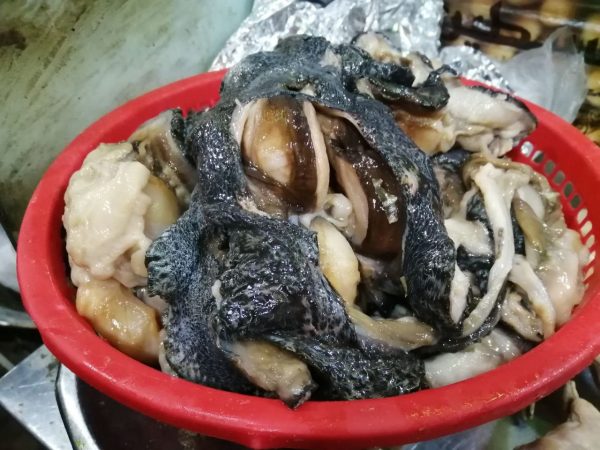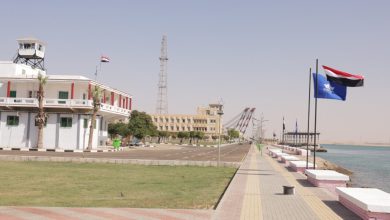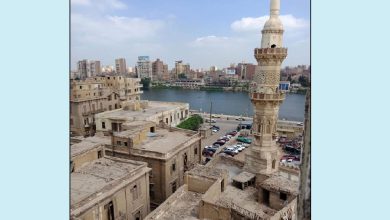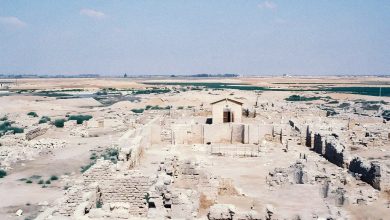The bounty of the sea and the secret of saltiness… Summer tales with fish in the heritage of Suez
- The Gulf of Suez: a diverse marine environment
- The secret of sea water in drying fish
- A tradition that stretches along the Red Sea
- Lugz and sardines: different flavors from the depths of the Gulf
In the city of Suez, Fish and seafood are not just everyday food provided by the sea, but a social ritual, a key component of collective memory, and a cultural heritage rooted in the past. Fish is more than just a meal; it is an annual occasion and a symbolic celebration during different seasons and holidays.
Seafood from the Gulf of Suez is more than just food; it is a story of heritage and culture that spans generations, from popular winter dishes to handicrafts, and from local fishermen to daily sales rings. The Gulf of Suez is home to a treasure trove of biodiversity and culinary delights, making the city a unique destination for lovers of the sea and food.
The Gulf of Suez: a diverse marine environment
Bakri Abu al-Hassan, head of the Suez fishermen’s union, says that the Gulf of Suez stretches over a large area of the Red Sea, forming a unique marine environment characterized by an enormous diversity of marine life. In addition to well-known fish species, the Gulf is home to a natural wealth of crustaceans such as shrimp and crab. There is also an abundance of mollusks in shellfish, which contain high levels of phosphorus and protein that exceed those found in crustaceans and other marine animals. This makes them an important source of nutrition and health for the residents of Suez and its visitors.
He points out that eating shellfish in Suez is not just a luxury seafood meal, but part of the popular culture. This is especially true during the summer nights, which is shellfish season, or the cold winter months. Dried shellfish, such as “sarouba,” is a favorite food for evening gatherings. Families gather to eat sandwiches made from it, enjoying its distinctive taste and high nutritional value.
Sea camels and the most famous phosphorus dishes
Samir Abdel Karim, known as “Al-Loul” or “Yassin,” owner of the oldest seafood shop in the Al-Gharib area, explains that “camel of the sea” or ‘saramba’ is the name given to one of the most famous sea creatures living at the bottom of the Gulf of Suez. It is caught from inside its shell, called “al-azma.”. It is then boiled or dried and eaten cold or preserved as a dried food for months. It was named “camel of the sea” because these creatures walk in rows on the seabed like camel caravans. This makes them easy to track and catch, and dried saramba is one of the most popular foods during the winter. This is due to its nutritional value and authentic sea flavor.
As for “sea tomatoes,” they are a unique dish known by this name because of their red color, which fishermen say indicates their high phosphorus and protein content. The people of Suez consider it one of the most beneficial seafood dishes. It is eaten fresh or after blanching and served cold in locally known sea phosphorus dishes.
Lugz and sardines: different flavors from the depths of the Gulf
Loul Abu Yassin adds that another famous cold dish is lugz, a mollusk extracted from medium-sized shells, which is boiled over low heat to preserve its flavor.
It is then gently extracted with a needle-like tool, cleaned of its intestines, and served cold. It is popular with customers who prefer a less salty or bland taste.
He points out that “sirdia” is a type of shellfish with small, shiny shells that resemble pearl shells. The edible part is extracted after carefully cleaning it of sand and algae, and the remaining part of the shell is used for decoration and inlaying antiques and furniture. The sardine shells are cut into small pieces for use in handicrafts. They are sold in antique shops or traditional craft stores.
Sea shells in Suez were not just ingredients for seafood, but also part of the industry and heritage. Following the opening of the Suez Canal, the British established a button factory that used siria shells to manufacture buttons for the suits and shirts of their officers and foreign workers. The inner luster of the siria was a key feature of these buttons. The factory continued to operate until after the revolution of July 23. It then closed with the nationalization of the canal and the departure of the British.
In modern times, these shells have been transformed into raw materials for the manufacture of jewelry and handmade accessories. Some vendors display jewelry made from shells and oysters, along with seafood dishes.
The symbolism of fish in Suez… After the food
During the festive season, the city of Suez maintains a unique tradition that is just as important as baking cakes. This involves preparing and eating dried fish. While families refrain from eating salted fish throughout Ramadan for fear of thirst, they return to it with a vengeance on the morning of Eid, in a special dish steeped in tradition.
The city’s residents call it “bacala.” Among the dozens of varieties, one fish stands out as the most popular during this time of year. It is the ‘harid’ fish, a type of “farhoudi” that lives in the Red Sea. It is distinguished by its beautiful colors, which resemble parrot feathers, and its firm texture, which is ideal for drying.
During the drying process, this fish loses more than two-thirds of its weight. However, it retains its unique taste and is transformed into something resembling “artistic panels” that are hung in fish shops.
An annual tradition that crosses borders
The consumption of bakala is not limited to the city’s residents, but extends to those living in Arab and European countries, who order it specially from their families to arrive before the holiday. It is not just food, but a memory and an occasion, whose rituals begin in the last days of Ramadan and culminate on the holiday table.
In the Al-Gharib neighborhood, one of the oldest in Suez, Abdullah Zaghloul, a dried fish merchant, stands in the middle of his small shop, whose walls and ceiling resemble a natural art gallery. Dried fish hang from thin strings, swaying in the sea breeze, their shiny scales revealing the quality of the drying process they have undergone.
“I buy harid fish when they weigh more than 5 kilos, and after drying, they weigh 2 kilos,” Zaghloul says. The drying process takes about a month in the summer. The fish are exposed to the sun during the day and aired at night until they lose their water and are preserved from spoiling.
A Pharaonic technique dating back thousands of years
Zaghloul points out that drying fish is an ancient tradition dating back to the Pharaonic era, when the ancient Egyptians preserved fish in two ways: salting or drying. The second method was longer and safer for storage, as dried fish could remain edible for more than two years. The only condition was that it must not come into contact with water or moisture.
Over time, this technique spread from Egypt to the Mediterranean countries, becoming part of a shared food and cultural tradition.
The secret of sea water in drying fish
One of the most important stages in preparing dried fish, as Zaghloul explains, is washing it with sea water. He adds: “Tap water activates bacteria, which can cause the fish to rot.”
He emphasizes that sea water dries quickly and does not cause the growth of germs, making it the ideal choice for washing fish before drying. After washing, the fish is cut lengthwise from the back, the entrails are removed, and it is salted with sea salt. It is then exposed to the sun and air.
At night, they are placed in front of a fan or, in the past, they were left on the beach to complete the drying process, during which care is taken to protect them from dust. They are covered with a light gauze.
Drying baccalà
The drying season lasts about 30 days, according to Hajj Abdullah Zaghloul, during which the weight of the fish gradually decreases. After weighing 5 kg, it ends up weighing only about 1.5 kg. Summer is the ideal time for this process, as the high temperatures ensure perfect drying and prevent mold or spoilage.
At the end of the month, the fish is ready to be displayed and sold, awaiting the feast table where families celebrate in their own special way.
The ritual of preparing “bacala”
The preparations begin on the eve of the feast. The dried fish is washed with tap water to remove dust and excess salt, then soaked in clean water overnight. In the morning, the fish meat returns to its softness and becomes easy to separate from the skin.
It can be cooked in many ways, the most popular being with tomatoes, dill, and parsley. Or it can be prepared as a casserole and baked in the oven to become the main dish on the first day of Eid.
A tradition that stretches along the Red Sea
This tradition is not limited to Suez, but extends to other cities on the Red Sea, such as Safaga and Al-Quseir. These areas are known for their people’s skill in drying fish.
Read also:
After 40 years at sea, Mohamed Diab creates models that bring ports to life






Hi, this is a comment.
To get started with moderating, editing, and deleting comments, please visit the Comments screen in the dashboard.